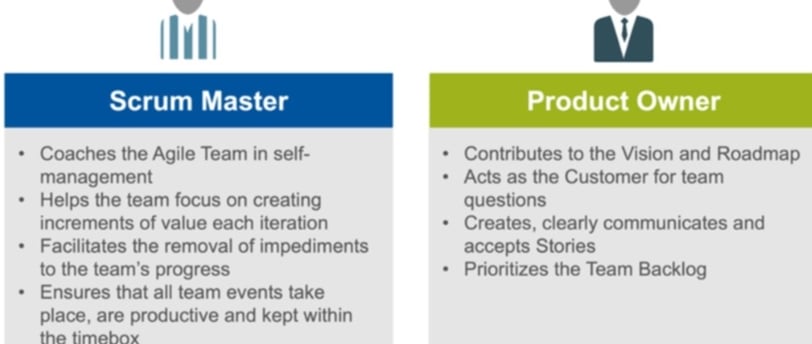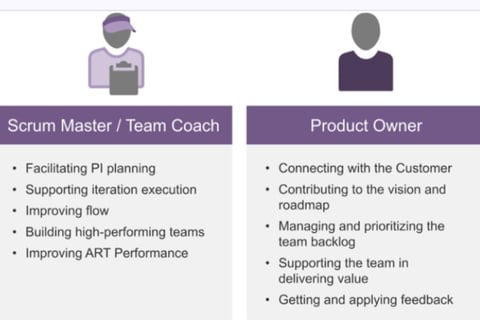Maximizing Agile and Scaled Agile Team Performances: Parameters, Precautions, Tools, and Techniques
A bullet point list serving multiple arenas
Roopesh Yogiputr Mathur CTO AgileDevOps Smart Management Consultancy
1/13/20243 min read


Introduction
Agile and Scaled Agile methodologies have revolutionized the way teams work and deliver value in today's fast-paced business environment. However, to maximize the performance of Agile and Scaled Agile teams, it is important to consider various parameters, take necessary precautions, and utilize appropriate tools and techniques. In this article, we will explore a bullet point list of these factors that can help teams achieve their highest potential.
Parameters for Maximizing Agile and Scaled Agile Team Performances
- Clear Goals and Objectives:
- Establish clear and measurable goals and objectives for the team to align their efforts towards a common purpose.
- Ensure that the goals are specific, achievable, relevant, and time-bound (SMART).
- Effective Communication:
- Promote open and transparent communication within the team and across stakeholders.
- Encourage active listening and provide regular feedback to foster collaboration and continuous improvement.
- Empowered and Cross-functional Teams:
- Build self-organizing teams that are empowered to make decisions and take ownership of their work.
- Create cross-functional teams with diverse skills and expertise to promote flexibility and adaptability.
- Continuous Learning and Improvement:
- Encourage a culture of continuous learning and improvement within the team.
- Adopt retrospectives to reflect on past experiences and identify areas for growth and enhancement.
- Collaboration and Trust:
- Promote a collaborative environment where team members trust and support each other.
- Facilitate knowledge sharing and cross-functional collaboration to maximize the team's collective intelligence.
Precautions for Maximizing Agile and Scaled Agile Team Performances
- Avoid Overcommitment:
- Ensure realistic and achievable project commitments to avoid overloading the team.
- Consider team capacity, available resources, and potential risks when planning and prioritizing work.
- Manage Dependencies:
- Identify and manage dependencies between teams, projects, and stakeholders.
- Establish effective communication channels and coordination mechanisms to minimize delays and conflicts.
- Proactive Risk Management:
- Identify potential risks and develop strategies to mitigate them proactively.
- Encourage team members to report and address risks promptly to prevent negative impacts on project delivery.
- Continuous Integration and Testing:
- Implement continuous integration and automated testing practices to ensure early detection of defects and maintain product quality.
- Adopt test-driven development (TDD) and behavior-driven development (BDD) approaches to drive quality throughout the development process.
- Regular Retrospectives:
- Conduct regular retrospectives to reflect on team performance and identify areas for improvement.
- Implement actionable changes based on retrospective findings to enhance team productivity and satisfaction.
Tools and Techniques for Maximizing Agile and Scaled Agile Team Performances
- Agile Project Management Tools:
- Utilize agile project management tools such as Jira, Trello, or Asana to manage and track project progress, tasks, and user stories.
- Leverage these tools to facilitate collaboration, visualize work, and ensure transparency across the team.
- Kanban Boards:
- Implement Kanban boards to visualize and manage the flow of work.
- Use columns to represent different stages of work (e.g., to-do, in progress, done) and move tasks across the board as they progress.
- Scrum Framework:
- Adopt the Scrum framework to facilitate iterative and incremental development.
- Implement Scrum ceremonies such as daily stand-ups, sprint planning, sprint review, and sprint retrospective to promote collaboration and accountability.
- Lean Principles:
- Incorporate lean principles such as value stream mapping, waste reduction, and continuous flow to optimize team performance.
- Eliminate non-value-added activities and focus on delivering value to the customer.
- DevOps Practices:
- Integrate DevOps practices to streamline the development and deployment processes.
- Automate build, test, and deployment pipelines to increase efficiency and reduce time-to-market.
Conclusion
Maximizing the performance of Agile and Scaled Agile teams requires a holistic approach that considers various parameters, takes necessary precautions, and utilizes appropriate tools and techniques. By establishing clear goals, promoting effective communication, building empowered teams, fostering continuous learning, and encouraging collaboration and trust, teams can achieve their highest potential. Additionally, by avoiding overcommitment, managing dependencies, practicing proactive risk management, implementing continuous integration and testing, and conducting regular retrospectives, teams can further enhance their performance. Finally, by leveraging agile project management tools, Kanban boards, the Scrum framework, lean principles, and DevOps practices, teams can optimize their workflows and deliver value efficiently. By following these guidelines, organizations can maximize the benefits of Agile and Scaled Agile methodologies and drive success in their projects and initiatives.


